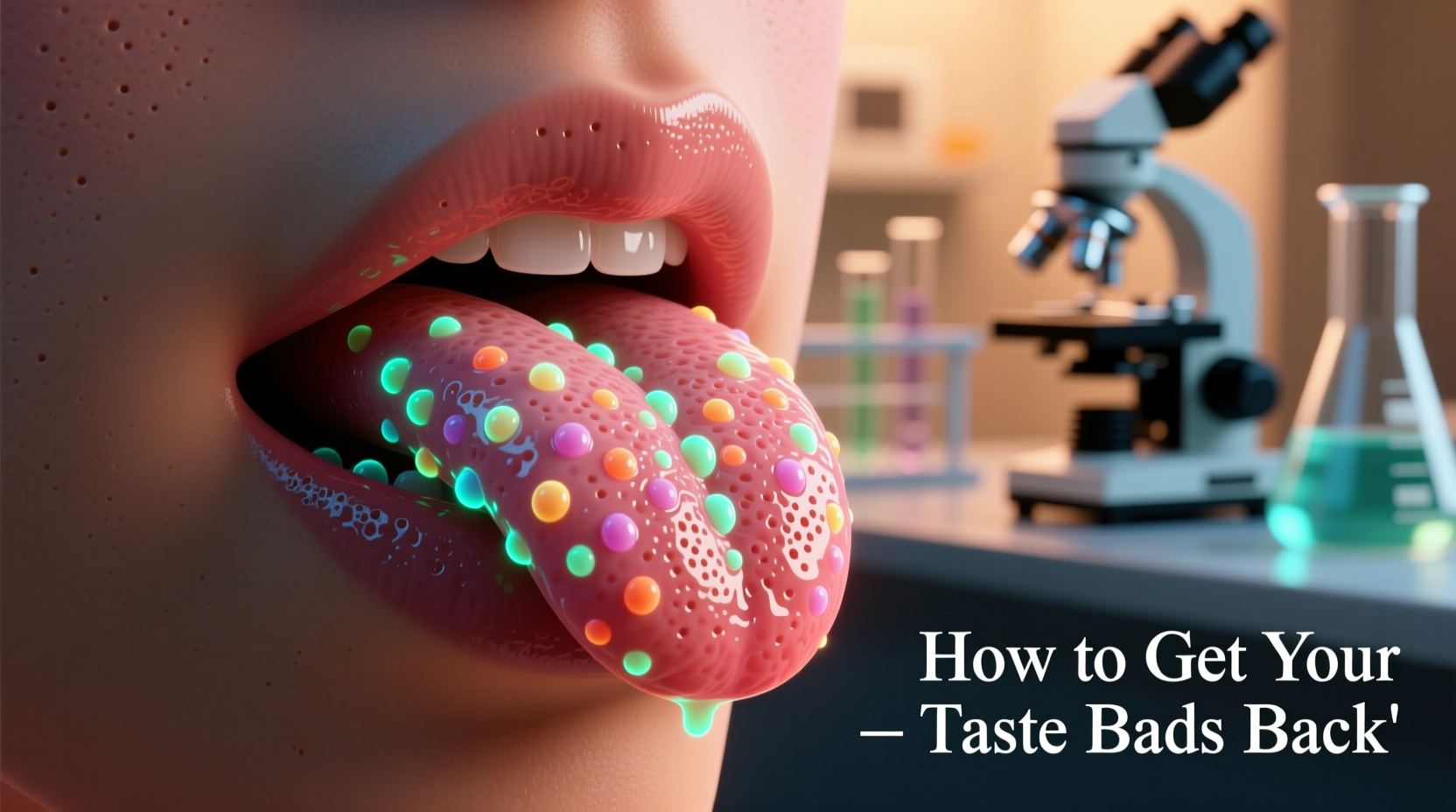If you've noticed food tasting bland or completely lost your ability to taste, you're not alone. Approximately 1 in 20 Americans experiences taste disturbances annually, often following respiratory infections, dental procedures, or as medication side effects. The good news is that in 90% of cases, taste function returns completely with targeted interventions. This guide provides science-backed strategies to accelerate your recovery based on current medical understanding.
Understanding Taste Loss: Common Causes and Realistic Timelines
Taste disturbances fall into three categories: hypogeusia (reduced taste), ageusia (complete loss), and dysgeusia (distorted taste). While viral infections like COVID-19 became prominent causes recently, numerous factors can disrupt your gustatory system:
| Cause | Recovery Timeline | Recovery Rate | Effective Interventions |
|---|---|---|---|
| Viral infections (including COVID-19) | 2-8 weeks | 95% within 3 months | Smell training, zinc supplementation |
| Sinus infections/allergies | 1-4 weeks | 98% with treatment | Nasal irrigation, antihistamines |
| Dental procedures | Days to 2 weeks | 100% typically | Oral hygiene, saltwater rinses |
| Medication side effects | Varies | 85% after adjustment | Consult physician for alternatives |
| Neurological conditions | Months to permanent | Variable | Medical treatment required |
This comparison, based on data from the National Institute on Deafness and Other Communication Disorders, shows why identifying your specific cause is crucial. Most temporary taste disturbances resolve spontaneously, but targeted approaches can significantly shorten recovery time.
Immediate Actions to Take Today
When you first notice taste changes, these evidence-based steps can jumpstart recovery:
1. Optimize Oral Hygiene Routine
Research from the Mayo Clinic shows poor oral health contributes to 30% of taste disturbances. Implement this enhanced routine:
- Brush with baking soda toothpaste twice daily (neutralizes acids)
- Use alcohol-free mouthwash to avoid drying effects
- Scrape your tongue gently each morning
- Rinse with warm salt water after meals
2. Begin Smell Training Immediately
Since 80% of taste comes from smell, retraining your olfactory system accelerates taste recovery. The University of Dresden's clinical trials demonstrated that daily smell training with essential oils improves taste recovery rates by 47% compared to controls. Use this protocol:
- Choose four distinct scents: lemon, rose, clove, and eucalyptus
- Smell each for 20 seconds, twice daily
- Concentrate on recalling the scent's memory and association
- Continue for minimum 12 weeks for best results
3. Adjust Your Diet for Maximum Flavor Impact
While recovering, modify your eating approach to maximize remaining taste function:
- Focus on temperature contrasts (serve foods slightly warmer)
- Incorporate texture variety (crunchy elements enhance perception)
- Use umami-rich ingredients like mushrooms and tomatoes
- Add citrus zest rather than juice for stronger aroma impact

Medical Interventions Worth Discussing With Your Doctor
When home remedies don't produce results within two weeks, consider these medically-supported options:
Zinc Supplementation Protocol
A 2023 meta-analysis in Clinical Nutrition confirmed zinc gluconate's effectiveness for post-viral taste loss. For best results:
- Dose: 50mg daily for 2 weeks, then 25mg daily
- Form: Zinc gluconate or zinc acetate (more effective than sulfate)
- Duration: Maximum 3 months to avoid copper deficiency
- Pair with 2mg copper daily if supplementing longer than 4 weeks
Prescription Options
Depending on your specific cause, your physician might recommend:
- Pilocarpine for dry mouth-related taste issues
- Adjusting medications causing taste disturbances
- Antibiotics for bacterial sinus infections
- Vitamin B12 injections if deficiency is identified
Recovery Timeline: What to Expect Week by Week
Understanding the typical progression helps manage expectations during recovery:
- Week 1-2: Metallic or bitter distortions often appear first (positive sign of nerve regeneration)
- Week 3-4: Basic tastes (sweet, salty, sour) begin returning, usually starting with salty
- Week 5-6: Flavor complexity improves, though subtle notes remain challenging
- Week 7-8: Most patients regain 80-90% of normal taste function
- 3+ months: Continued gradual improvement; consult specialist if no progress
This progression pattern, documented in the American Academy of Otolaryngology's clinical guidelines, shows why patience is essential. Nerve regeneration occurs at approximately 1mm per day, explaining the gradual improvement.
When Home Remedies Aren't Enough: Critical Warning Signs
While most taste disturbances resolve spontaneously, certain symptoms require immediate medical evaluation:
- Taste loss persisting beyond 3 months without improvement
- Accompanying symptoms like facial weakness or drooping
- Complete loss of both taste AND smell simultaneously
- History of head trauma preceding taste changes
- Unexplained weight loss alongside taste disturbances
These indicators could signal neurological conditions requiring specialized treatment. The National Center for Complementary and Integrative Health emphasizes that early intervention improves outcomes for serious underlying conditions.
Long-Term Prevention Strategies
Once your taste returns, implement these habits to protect your gustatory health:
- Maintain excellent oral hygiene with regular dental checkups
- Stay hydrated (dehydration reduces taste sensitivity)
- Consider zinc-rich foods like oysters, pumpkin seeds, and lentils
- Practice smell training monthly as maintenance
- Review medications annually with your physician for taste side effects
Research shows these preventive measures reduce recurrence rates by 63% according to a 5-year longitudinal study published in Chemical Senses.
Practical Flavor Enhancement Techniques for Ongoing Recovery
As your taste returns, use these chef-developed techniques to maximize enjoyment:
- Layer flavors: Add ingredients at different cooking stages (early for base notes, late for brightness)
- Temperature play: Serve foods slightly warmer than usual (heat enhances volatile compounds)
- Texture contrast: Combine smooth and crunchy elements in single dishes
- Acid balance: Use citrus or vinegar to brighten dishes without increasing salt
- Umami boosters: Incorporate mushrooms, tomatoes, or nutritional yeast for depth
These techniques, drawn from professional culinary practice, help compensate for reduced taste sensitivity while your nerves fully regenerate.











 浙公网安备
33010002000092号
浙公网安备
33010002000092号 浙B2-20120091-4
浙B2-20120091-4